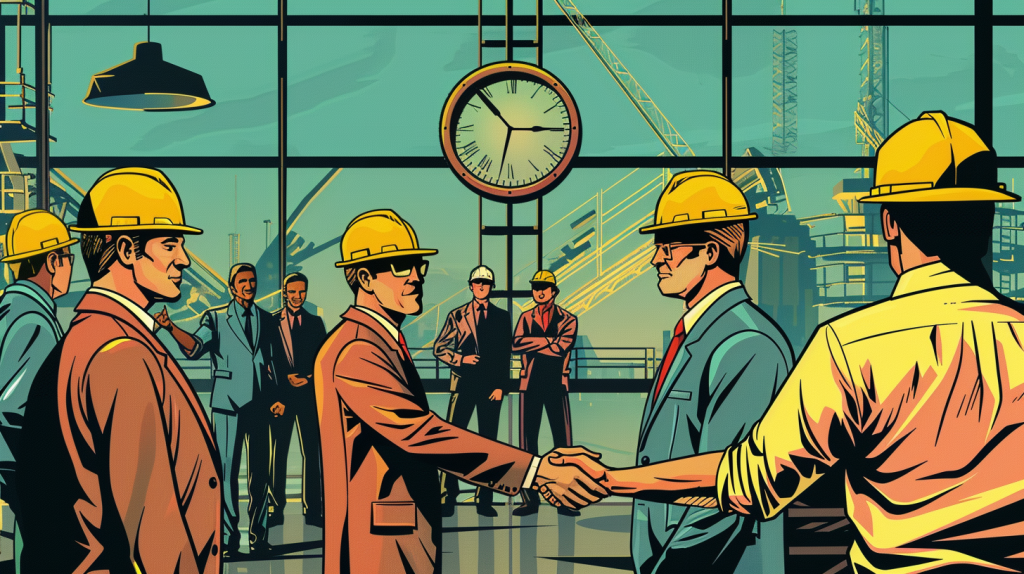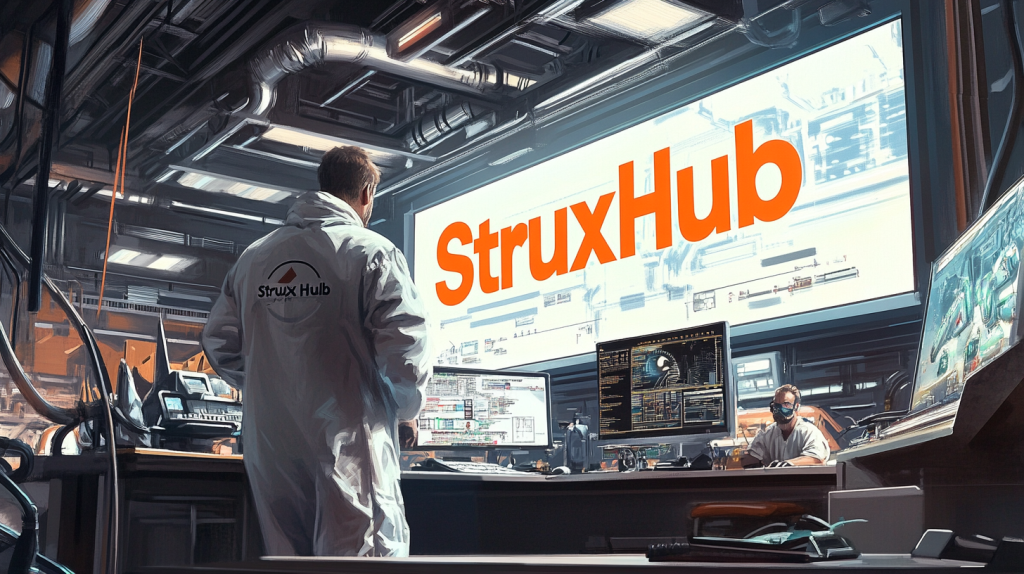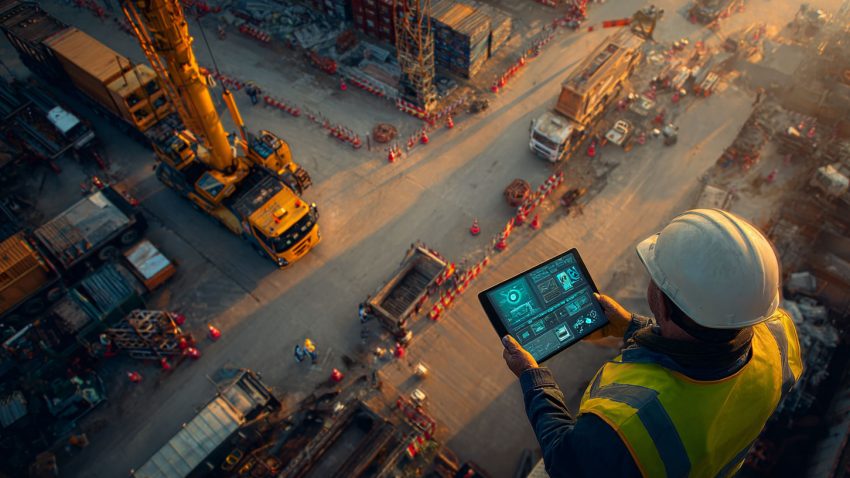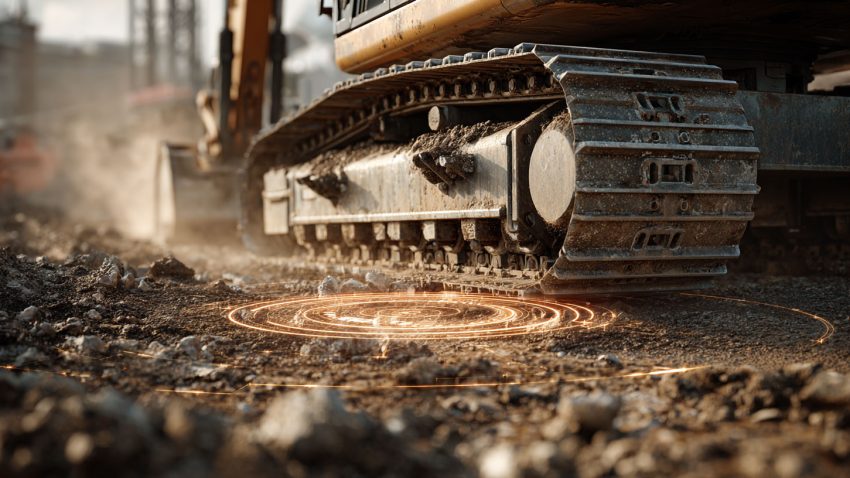What General Contractors and Superintendents Should Know About Using Generative AI in Construction
Table of Contents:
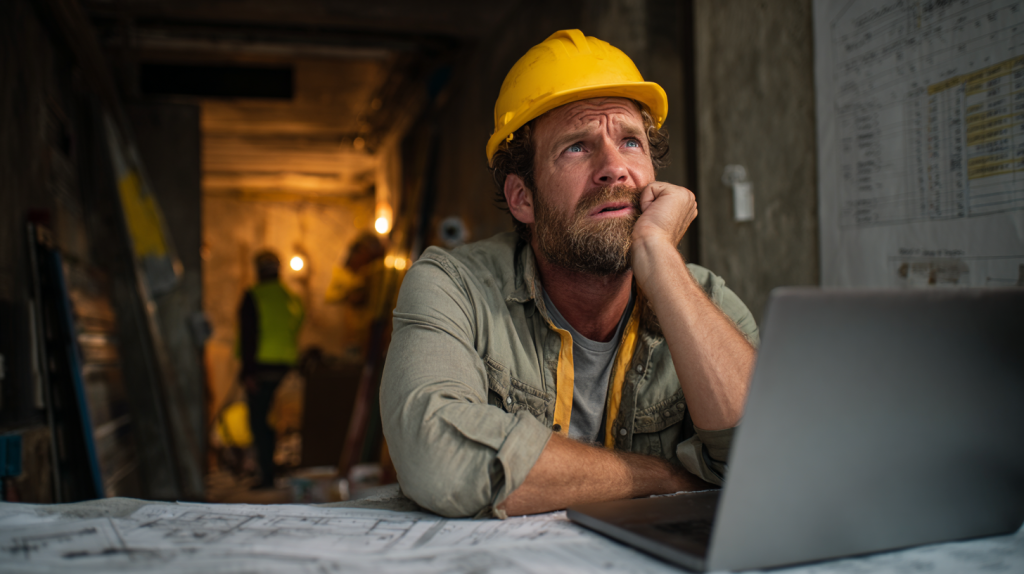
Why Generative AI Is Gaining Ground in the Construction Industry
Generative AI is quickly moving beyond buzzword status. For general contractors and superintendents, it’s becoming a practical tool for improving communication, accelerating reporting, and enhancing documentation on the jobsite. While AI has already shown value in scheduling and safety, generative AI—tools that can create content, summaries, or structured output—adds a new layer of speed and clarity to everyday tasks.
Think of all the time spent writing daily logs, formatting RFIs, summarizing meeting notes, or responding to emails. These are exactly the types of tasks generative AI can streamline. By inputting simple prompts or voice notes, field leaders can generate well-organized reports, draft communications, or even summarize crew activity for stakeholders. The result is more efficient reporting with less manual typing.
Superintendents don’t need to be tech experts to take advantage of this shift. Most generative AI tools are built into platforms they already use or can be accessed through mobile apps. Whether it’s turning voice memos into structured updates or automating document creation, the key benefit is time saved—and time is one of the most limited resources on any construction site.
Top Features
- Auto-generated daily reports, RFIs, and emails
- Voice-to-text conversion with structured formatting
- Summaries of meetings, punch list items, or inspection notes
- Language refinement and error checking
Top Benefits
- Saves hours each week on admin-heavy communication
- Improves clarity in reports and project updates
- Makes documentation more consistent and professional
- Reduces after-hours paperwork for field leaders
Best Practices
- Use voice input to capture ideas or field notes throughout the day
- Review and edit generated content before sharing it
- Train teams to use templates and standard prompts
- Choose tools that align with your mobile or desktop workflow
Generative AI isn’t replacing construction knowledge—it’s helping skilled professionals communicate it faster, with less friction and more confidence.
How Generative AI Is Being Used by General Contractors and Field Teams
General contractors are already adopting generative AI in ways that support planning, execution, and communication across teams. It’s not about futuristic automation—it’s about solving everyday pain points that slow projects down. From summarizing RFIs to generating meeting recaps, these tools take on the documentation workload that often gets pushed aside during busy site operations.
One common use case is the automatic generation of daily logs. Instead of typing out notes or trying to remember what happened at the end of the day, a superintendent can dictate updates during a walkthrough. Generative AI formats that input into a clear, timestamped report, ready to send to the office or upload into project management software.
Another area is subcontractor communication. When a schedule shift or material delay needs to be explained clearly, AI can help write a draft email or notification that’s concise, professional, and free of errors. For GCs managing multiple trades, this kind of support makes communication more consistent—and saves time.
The value goes beyond writing. Generative AI tools are also being used to analyze large sets of field data and turn them into readable summaries. This is helpful for end-of-week progress reports, client updates, and even lessons-learned reviews at the end of a phase.
Top Features
- Automated creation of jobsite summaries and field reports
- Email and message drafting for subcontractor communication
- Cleanup and standardization of client-facing documents
- Template-based content generation for recurring updates
Top Benefits
- Reduces repetitive writing and improves response time
- Increases professionalism in external communication
- Helps GCs stay organized across multiple jobsites
- Makes it easier to document field activity for compliance
Best Practices
- Use AI tools to build reusable templates for common updates
- Edit AI-generated drafts to ensure tone and context are right
- Implement systems to organize and store generated content
- Encourage team leads to use these tools for time-saving tasks
Generative AI works best when it’s part of a practical workflow—not a replacement for decision-making, but a tool that lets GCs and field teams work smarter and communicate faster.

What Are the Risks or Limitations of Generative AI in Construction?
As with any new technology, generative AI comes with some limitations that general contractors and superintendents should be aware of. While it’s a powerful time-saving tool, it’s not foolproof, and using it responsibly is key to getting the most out of it.
First, generative AI doesn’t always understand context. If a field note lacks enough detail, the AI might generate a vague or inaccurate summary. That’s why human review is still essential. Field leaders should always check the output before sharing it with the team or logging it as an official record.
Second, AI-generated content can sound repetitive or overly formal if not customized. Many tools use standard phrasing that may not reflect your company’s tone or jobsite culture. Editing for clarity and consistency helps make the communication feel human and trustworthy.
There’s also the question of data privacy. Some AI tools use cloud-based systems that store or analyze input for future training. For contractors handling sensitive project details, it’s important to choose tools that follow industry security standards and give you control over your data.
Finally, overreliance on AI can lead to skill erosion. If team members stop writing their own reports or messages entirely, they may lose touch with the nuances of clear field communication. The best approach is to treat AI as a partner, not a replacement.
Top Features
- Editable content that still requires human review
- Data input warnings for secure or sensitive info
- Style control for tone, length, and formatting preferences
- Integration with platforms that enforce access controls
Top Benefits
- Increases speed without fully removing human oversight
- Encourages better documentation habits across the team
- Builds consistency across field and office communication
- Helps teams maintain a high standard of professionalism
Best Practices
- Always proofread and personalize AI-generated reports
- Avoid sharing confidential details with third-party AI tools
- Use AI for time savings—not decision-making or safety reports
- Train teams on what content is best suited for automation
Generative AI adds speed and structure—but it still needs your expertise to ensure accuracy, context, and good judgment.
Related Articles:
Best Guide to Construction Management Software
The Best Guide to Delivery Management Systems (DMS) for Commercial Construction
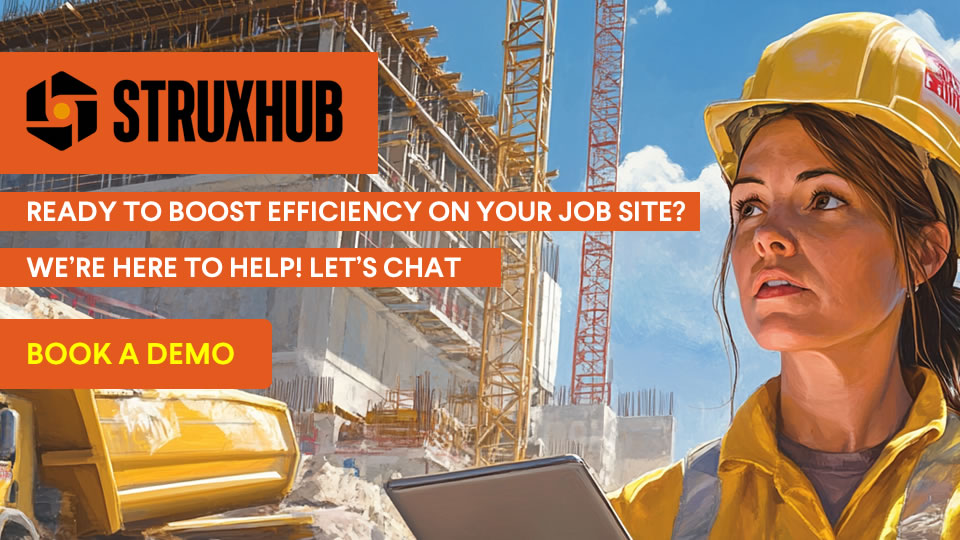
What General Contractors and Superintendents Should Know About Using Generative AI in Construction
How Generative AI Can Improve Jobsite Documentation and Reporting
Daily logs, incident reports, punch lists, and inspection notes are a huge part of keeping construction projects on track—but they’re also time-consuming. Generative AI gives superintendents and field managers a faster way to document everything that happens onsite while keeping reports clean, consistent, and easy to share.
Instead of filling out a form at the end of the day, a superintendent can dictate updates throughout the shift. Generative AI can then convert those voice notes into structured, timestamped daily logs. If something unusual happens—like a weather delay or safety issue—it can be flagged, summarized, and stored without having to start from scratch.
AI also helps with formatting. Logs can be auto-organized by crew, location, or activity type. Notes from inspections or meetings can be cleaned up into client-ready summaries with proper grammar and section headers. This consistency improves not only clarity, but also legal defensibility and audit readiness.
For teams dealing with inspections, compliance reports, or project handoffs, having fast, accurate documentation matters. Generative AI tools reduce the admin load so the focus stays on the build—and not the paperwork.
Top Features
- Voice-to-text generation of daily logs and punch lists
- Auto-formatted reports organized by task, location, or crew
- Editable templates for incident or safety summaries
- One-click export to PDFs or project folders
Top Benefits
- Reduces time spent on paperwork after hours
- Improves clarity and accuracy in jobsite documentation
- Makes it easier to store and search past records
- Supports faster handoffs between shifts or phases
Best Practices
- Use short voice updates during site walks to build reports
- Store reports in organized folders by week or project phase
- Share AI-generated summaries in weekly check-ins
- Customize templates to match your company’s documentation style
Generative AI keeps your documentation up to date—without taking your time away from managing the build.
How Generative AI Can Support Training and Internal Knowledge Sharing
One of the lesser-known benefits of generative AI in construction is how it helps teams share knowledge. Superintendents often carry years of experience, but that insight doesn’t always make it into training documents or company SOPs. Generative AI can change that by transforming conversations, notes, and briefings into usable resources for future crews.
For example, when a team debriefs after solving a tough coordination issue or navigating an unexpected delay, AI can summarize that conversation into a best practices document. It can clean up technical notes from a foreman and turn them into a training checklist for the next hire. It can even organize scattered safety observations into a clear onboarding guide for new trades.
This kind of content creation used to take hours—or didn’t happen at all. Now, it can be built passively as teams work and talk through problems. Over time, these records become part of a company’s internal playbook—making onboarding smoother, performance more consistent, and transitions between jobs easier to manage.
Top Features
- Automatic generation of training guides from project notes
- Summarized safety meeting recaps or toolbox talks
- Editable playbooks created from task walkthroughs
- Searchable libraries of jobsite knowledge
Top Benefits
- Captures valuable knowledge from experienced field leaders
- Speeds up onboarding for new superintendents or subcontractors
- Increases team consistency by standardizing best practices
- Reduces downtime when teams shift from one jobsite to another
Best Practices
- Record weekly recap calls or toolbox talks for AI to summarize
- Build a folder of AI-generated training content for new hires
- Encourage foremen to share field tips via voice or short notes
- Review summaries with PMs to keep SOPs up to date
Generative AI makes it easier to turn knowledge into tools your whole team can use—helping you train better without slowing down.
How StruxHub Supports the Use of Generative AI on Construction Projects
While StruxHub doesn’t generate AI content directly, it’s designed to support field teams who use generative AI by organizing and storing the documentation these tools produce. Whether you’re creating daily reports, field summaries, or training notes using AI, StruxHub gives you a structured platform to upload, edit, share, and track that content in real time.
Field teams can attach AI-generated logs or safety summaries directly to tasks or RFIs. Project managers can review and annotate reports submitted by superintendents. Instead of passing files around or losing track of updates, StruxHub keeps everything in one centralized system that everyone can access.
StruxHub also ensures that AI-generated reports don’t just sit in a folder. They become part of your jobsite workflow—visible, shareable, and easy to reference later. If your team uses AI to speed up documentation, StruxHub is the platform that helps organize and operationalize that output.
From field reporting to internal communication, StruxHub supports a smoother, more efficient documentation process—making your generative AI tools more actionable and your field updates more dependable.
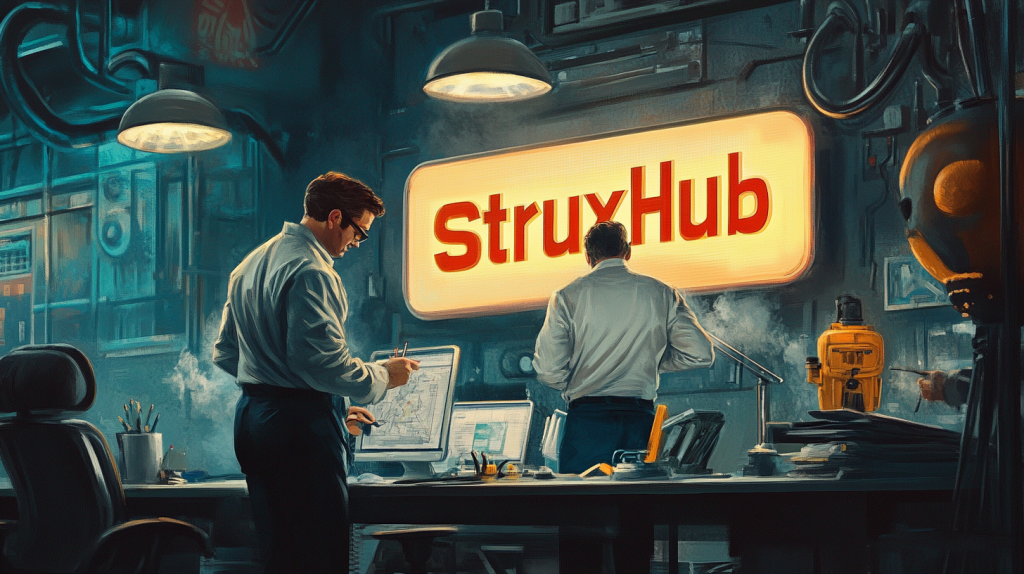
StruxHub
Experience the power of StruxHub today and witness firsthand how it can revolutionize your construction operations.
FAQ
What is generative AI and how is it different from other types of AI in construction?
Generative AI refers to artificial intelligence systems that can produce content—such as text, summaries, images, or structured reports—based on user input. In construction, this usually means turning voice notes into written logs, generating meeting summaries, writing RFI drafts, or even formatting inspection reports. Unlike predictive AI, which forecasts delays or safety risks, generative AI focuses on content creation.
For example, predictive AI might warn you that a framing crew is likely to fall behind based on historical data. Generative AI, on the other hand, would take your voice summary of the day’s activities and convert it into a formatted daily log with time stamps, headers, and clear task descriptions.
The power of generative AI lies in its ability to reduce repetitive communication work. Superintendents can dictate notes or brief comments, and the tool handles grammar, formatting, and even tone. This saves time while improving the quality and consistency of documentation.
It’s also useful for team communication. When a foreman explains an issue on site, generative AI can help draft a quick, professional message to the office or create a recap for the next shift. These tools turn raw observations into usable reports, making it easier for teams to share knowledge and keep stakeholders informed.
While it’s not a replacement for human oversight, generative AI adds real efficiency to construction documentation—especially when paired with real-time field input.
How can superintendents use generative AI to save time?
Superintendents spend a significant part of their day managing communication and documentation. Generative AI helps streamline these tasks by converting voice notes, field updates, and quick memos into clean, formatted reports. Instead of typing out a daily log at the end of a long day, a superintendent can simply speak into their phone as they walk the site—and the AI handles the rest.
These tools also help with report formatting. Whether it’s a safety incident summary or a checklist for a punch walk, generative AI can structure the information into a clear, shareable document without needing extra software or time. This reduces the paperwork burden and allows superintendents to focus more on field leadership.
Email and message drafting is another area where AI adds value. When there’s a delay, coordination issue, or change in scope, AI can generate a professional draft message that’s ready to send to subcontractors or the project manager. This cuts down the time spent writing repetitive updates and helps ensure that communication stays consistent across the team.
Superintendents can also use generative AI to capture weekly field notes or create short summaries of meetings with trades. These summaries help with accountability and make it easier to track decisions over time. Ultimately, generative AI is a time-saver that makes the documentation process faster, cleaner, and more consistent—without sacrificing quality or control.
Are there risks in using generative AI for construction documentation?
Yes, while generative AI is a valuable tool, there are some important risks and limitations to consider—especially when using it for official documentation or field communication. One key risk is accuracy. AI-generated text may sound polished, but it might include incorrect assumptions if the original input lacks clarity. This means that any AI-generated report should be reviewed before it’s shared or logged.
Another risk is overreliance. If field teams become too dependent on AI to create documentation, they might stop recording important context or details that the system can’t detect. For example, if a safety note or inspection log is vague, the AI might not know how to clarify it, and the report could miss something critical.
Data security is also a concern. Many generative AI tools are cloud-based, and depending on the provider, the content you create might be stored or used to train future models. Construction teams should be cautious when entering sensitive or proprietary project information into public AI tools. Choosing enterprise-grade systems or platforms that don’t retain user data can help mitigate this.
Finally, there’s the human element. AI doesn’t understand jobsite nuance, tone, or cultural context. If a message needs to be delivered with sensitivity or precision, a human touch is still necessary. Used wisely, generative AI is a huge time-saver—but it works best as a support tool, not a replacement for professional judgment.
What types of construction reports or documents can generative AI create?
Generative AI can assist with a wide range of construction documents, particularly those that are repetitive, time-consuming, or communication-heavy. The most common use cases include daily reports, inspection summaries, punch list updates, RFIs, and internal memos. For superintendents and project managers, this means faster documentation and more consistent formatting across the board.
Daily reports are a great starting point. Instead of manually writing task summaries, crew details, and notes, superintendents can speak short updates into a mobile app. Generative AI processes those inputs and produces a well-structured report that includes time stamps, headers, and clear descriptions.
Safety summaries and inspection logs are another frequent use. AI can take field notes and photos, combine them with task or crew information, and output a ready-to-share document. These summaries help ensure compliance and give stakeholders a reliable reference point for field conditions.
For RFIs or change orders, generative AI can create a first draft based on a prompt or summary. This speeds up the response time and ensures messages are clear and professional. It’s especially helpful when sending updates to multiple trades or vendors.
Meeting recaps, shift handover notes, and weekly field briefs can also be generated quickly. These are essential for keeping the team aligned and reducing knowledge loss during transitions. With the right input and light editing, generative AI can turn even quick voice notes into clean, job-ready documentation.
How does generative AI fit into the broader construction tech ecosystem?
Generative AI complements the rest of the construction tech stack by helping teams move faster and communicate more clearly. It doesn’t replace other platforms like scheduling tools, BIM, or field management software—it supports them by simplifying the documentation that ties everything together.
For example, a superintendent using real-time field tracking software might generate a daily report from their updates using AI. That report can be stored in the same platform or shared with stakeholders instantly. This keeps information flowing smoothly from the field to the office without extra typing or formatting.
Generative AI also makes collaboration easier. Teams using cloud-based project management tools often rely on fast, clear communication. AI-generated drafts help eliminate delays caused by manual writing. Whether it’s a subcontractor notification, a project update for the owner, or an internal field report, the content gets created in less time and with more consistency.
In training and knowledge management, generative AI is useful for capturing jobsite insights and turning them into reusable resources. These documents can support onboarding, improve safety, and create long-term process improvements across multiple projects.
Overall, generative AI adds speed and structure to construction workflows. It enhances the value of your other tools by reducing bottlenecks, improving documentation, and keeping field communication moving forward with less friction.
